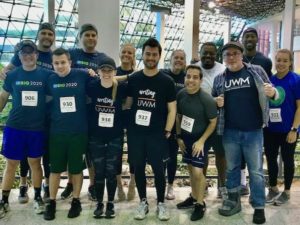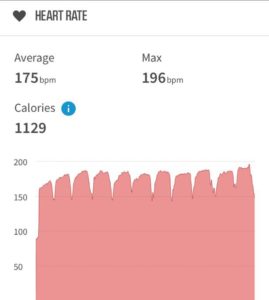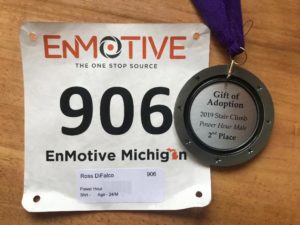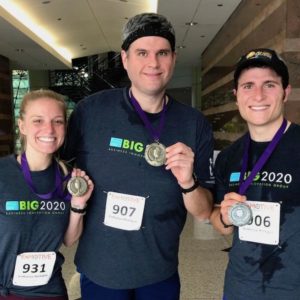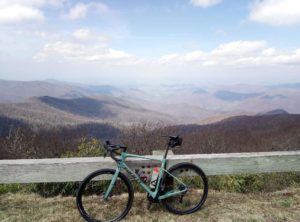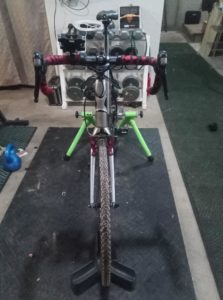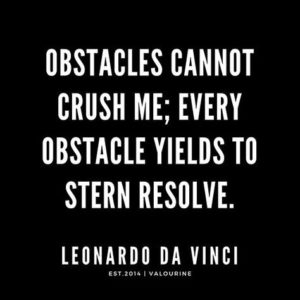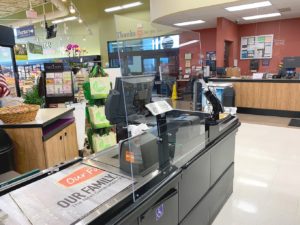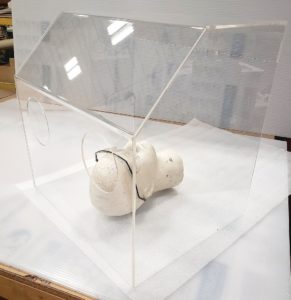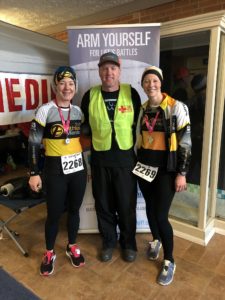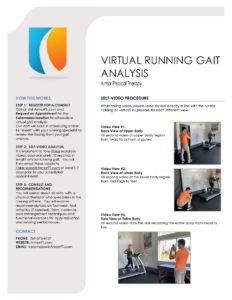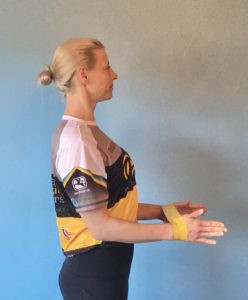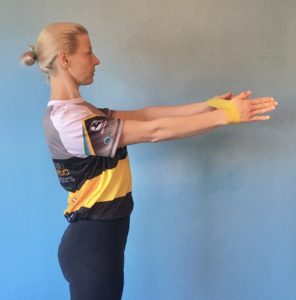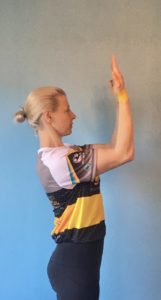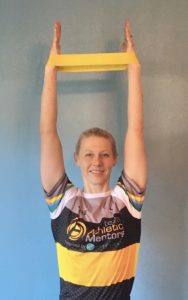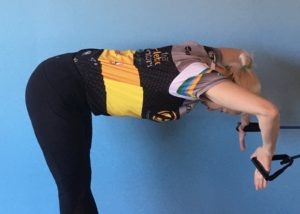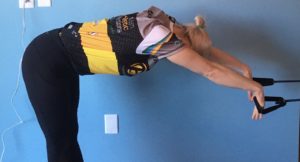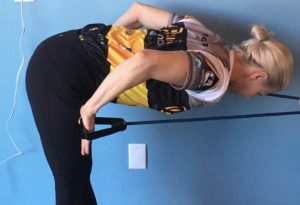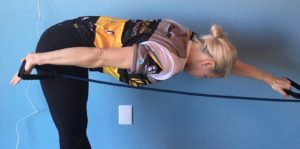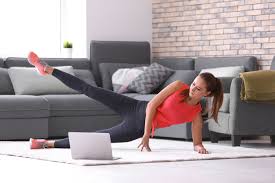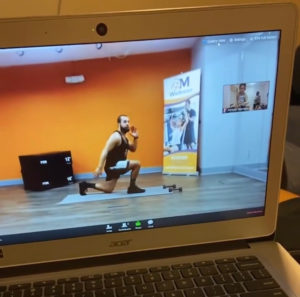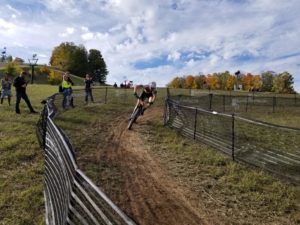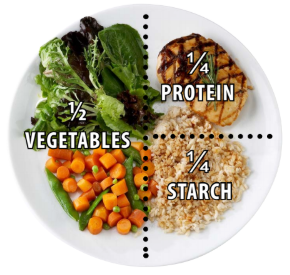By Jared Dunham
As an endurance athlete you may be faced with many early morning or otherwise inconveniently timed workouts to your daily schedule. To fuel for one of said workouts it’s easy to reach for a protein bar, cereal or a similar product, however a better and more holistic option is oatmeal. Oatmeal is an empty canvas as far as food goes, it can be served in many ways and variations. Admittedly I’m an emerging oat addict myself, eating mostly oatmeal for a great deal of my past breakfasts. Nowadays I don’t eat oats nearly as much as I did in the past but still thoroughly enjoy the dish every now and again. With that being said, here are some of my favorite recipes for oatmeal. I hope they help break you out of your daily oat rut or make you take a shot in the dark and try some oats for the first time.
Quick Notes:
- These oat recipes can be made easily in 15 minutes or less with the caveat that you use a microwave for cooking.
- Most microwaves have an “Oatmeal’ setting on them, however cooking them for about 3 minutes is a good substitute.
- Boiling oatmeal on the stove in a cooking pot also works, however this requires a little more time and cleanup, so I usually opt for the microwave if I’m trying to whip up some oats quickly.
- All my recipes are based on one serving and are a ½ cup of dry oats each.
- When cooking these oats, I use about ¾ cup of water.
- Milk is a good substitute, which some of the recipes call for, but I use water most of the time.
- Lastly, the amounts of ingredients in these recipes are in the eye of the beholder and all these meals are open to editing so if there’s something you wanted to change then go ahead and try it.
Classic Recipes
Pumpkin Spice
While the season for pumpkin spice lattes may be over, you can still enjoy this meal anytime.
Ingredients: Estimated Nutrition Facts: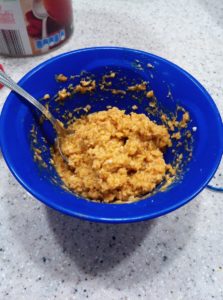
- ½ Cup Oats Calories: 268
- 1/2 tsp Pumpkin Spice Carbs: 38.5g
- 1/8 Cup Pecans Fat: 10.3g
- 1/4 Cup Canned Pumpkin Protein: 8g
- ½ tbsp Brown Sugar
Directions:
- Begin cooking oats, about halfway through mix the canned pumpkin in with the water and oats.
- Finish cooking.
- Mix in brown sugar to be sure it melts while oats are hot. Afterwards stir in other ingredients and enjoy.
Cinnamon Apple
Cinnamon apple is a very simple recipe that is a good option if you are trying to fuel for a workout or day without many bells or whistles attached.
Ingredients: Estimated Nutrition Facts:
- ½ Cup Oats Calories: 204
- ½ Finely Chopped Apple Carbs: 41.7g
- 1 tsp Cinnamon Fat:3.2g
Protein:6.3g
Directions:
- Chop up half an apple while aats cook.
- When oats finish mix in Cinnamon and Apple.
Cooking Notes: If you’re looking to sweeten up this recipe then add half a tablespoon of brown sugar or maple syrup.
Maple Nut
This recipe was crafted to mimic the taste of the “Maple Nut” glazing that coats a doughnut of the same name. The main difference is this one speeds you up instead of slowing you down.
Ingredients: Estimated Nutrition Facts:
- ½ Cup Oats Calories: 300
- 1 tbsp Natural Peanut Butter Carbs: 45.1g
- 1 tbsp Real Maple Syrup Fat:11g
- 1 tsp Vanilla Extract Protein:9.5g
Directions:
- Cook oats, then mix all ingredients.
Carb Load
Sweet Potato Oats
Sweet potatoes and oatmeal can be a match made in heaven especially if you’re looking to pack in a few extra all-natural carbs before a ride. This bowl combines the two with a dash of sweetness and salt.
Ingredients: Estimated Nutrition Facts: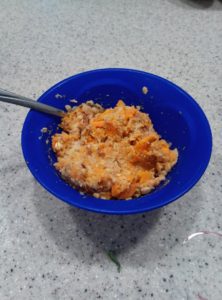
- ½ Cup Oats Calories: 321
- 1/2 Sweet Potato Carbs: 52g
- 1 tbsp Brown Sugar Fat: 10g
- 1/8 Cup Chopped Pecans Protein: 7g
Directions:
- Chop up the Sweet Potato while Oats cook.
- Stir in Brown Sugar to melt after Oats finish.
- Cook Sweet Potato in microwave if you need to.
- Mash Potato in with Oats until desired texture is achieved.
- Mix in Pecans.
Cooking Notes: The fastest way to make this recipe is to microwave the potato however, if you steam it, that will allow the spud to mix better with the oats. If you’re looking for more carbs add the whole potato.
The Fruit Bowl
Let’s see how many different fruits we can mix in with oatmeal. This is less of a standout than some of the other recipes but still holds true with how great oats taste when your average fruits are mixed in.
Ingredients: Estimated Nutrition Facts: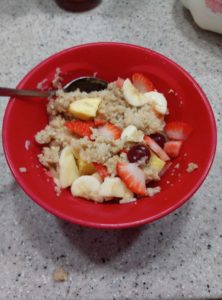
- ½ Cup Oats Calories: 259
- ½ tbsp Honey Carbs: 55g
- 1 Sliced Strawberry Fat:3.3g
- 1 Sliced Orange Wedge Protein:7g
- 1/4 Chopped Apple
- 1/4 Sliced Banana
- 6 Grapes
Directions:
- If Fruit isn’t already prechopped then do that while Oats cook.
- Mix Honey followed by Fruit when Oats are finished.
Cooking Notes: This recipe requires various fruits, but you can use whatever may be at your disposal. If there’s any leftover fruit salad, simply use that or chop up fruit to be used for several servings and then store in the refrigerator.
Beet Oatmeal
Studies have shown that beets can help improve performance in endurance sports when consumed before exercise. It only makes sense that we add them in with oats.
Ingredients: Estimated Nutrition Facts: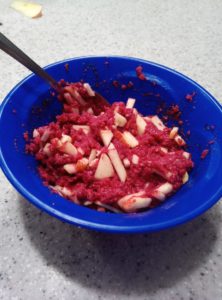
- ½ Cup Oats Calories: 260
- ¾ Cup Beet Juice Carbs: 54.4g
- 1/2 Finely Chopped Apple Fat: 3.2g
- ½ tsp Cinnamon Protein: 6.4g
- ½ tsp Vanilla
- 1 tbsp Brown Sugar
Directions:
- Add Beet Juice instead of Water to Oatmeal for cooking.
- Chop Apple while Oats cook.
- Once Oats are finished, mix in: Cinnamon, Vanilla, Brown Sugar and Apple.
Cooking Notes: Unless you have a juicer or direct access to beet juice then mixing dried beet powder in with water will be your best option. That is what I do here.
Protein Packed
Greek Oats and Berries
For this recipe the Greek Yogurt provides a nice contrast to the citrus flavor of the mixed fruit.
Ingredients: Estimated Nutrition Facts:
- ½ Cup Oats Calories: 210 to 235
- ½ Cup Frozen Mixed Berries Carbs: 38 to 40g
- ¼ to ½ Cup Greek Yogurt Fat: 3g
Protein: 10 to 15g
Directions:
- Cook Oats.
- Cook Berries separately.
- Mix warmed Fruit with Oats and Greek yogurt.
Cooking Notes: I prefer to leave the fruit juice that comes with the frozen fruit in when I mix with oats.
Strawberry Dream
I was a little hesitant on mixing cottage cheese in with oatmeal but soon discovered that the pair have a similar flavor that jives perfectly.
Ingredients: Estimated Nutrition Facts: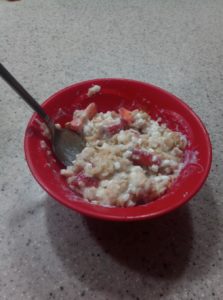
- ½ Cup Oats Calories: 279 to 334
- 6 Chopped Strawberries Carbs: 48 to 50g
- ¼ to ½ Cup Cottage Cheese Fat: 5 to 8g
- 1tbsp Strawberry Jam Protein: 8 to 17g
Directions:
- Chop Strawberries while Oats cook.
- After Oats are ready; mix in Cottage Cheese and Strawberry Jam.
- Lastly, add Strawberries.
Cooking Notes: This recipe can be adapted to any fruit, EX: Chopped Peaches and Peach Jam.
Savory Oat Bowl
Here’s another one you may have to be open minded about. Trust me though, there’s nothing under the sun that doesn’t taste great with bacon and cheese.
Ingredients: Estimated Nutrition Facts: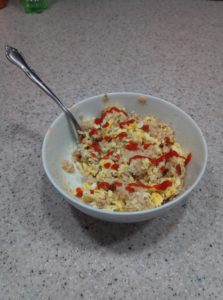
- ½ Cup Oats Calories: 361
- 2 Eggs (Runny) Carbs: 28g
- 1 Crumbled Slice of Cooked Bacon Fat: 18.3g
- 1 tbsp Shredded Cheddar Cheese Protein: 22.8g
- Salt and Pepper to taste
Directions:
- Fry Eggs while Oats cook.
- Mix Cheddar Cheese in with oats after they’re finished.
- Add Bacon to mixture.
- Mix in Salt and Pepper to taste, then top with Runny Eggs.
Cooking notes: I prefer using runny eggs for this recipe because the yoke adds more flavor to the bowl, however I have tried mixing scrambled in with oats. Something I haven’t tried is mixing precooked oats in with scrambled eggs as they cook. If you want to make this recipe much faster with less cleanup make sure to pre-fry your bacon and then simply store in the fridge till you need to use it, then microwave to warmup for this recipe.
Indulgent Recipes
Elephant Ear
As the name would suggest, the main objective of this recipe was to have a similar taste with that of an Elephant Ear. This one is surprisingly low calorie compared to a lot of the other recipes that made it onto the “Indulgent” list.
Ingredients: Estimated Nutrition Facts:
- ½ Cup Oats Calories: 271
- 1 tbsp Sugar Carbs: 32G
- ½ tbsp Cinnamon Fat: 14.5G
- 1 tbsp Melted Butter Protein: 5G
Directions:
- Begin cooking Oats
- Near the end of their prep add Butter to be melted.
- Mix Butter in with Oats and add other ingredients.
Almond Joy
We’re going for an Almond Joy candy bar here, enough said.
Ingredients: Estimated Nutrition Facts: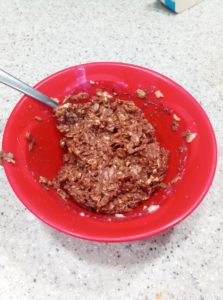
- ½ Cup Oats Calories: 577
- 1/8 Cup Sweetened Coconut Flakes Carbs: 64.6g
- 1/8 Cup Chocolate Chips Fat: 31g
- 1/2 Cup Whole Milk Protein: 18.6g
- 1/8 Cup Sliced Almonds
Directions:
- Cook Oats with Milk instead of Water.
- After Oats have finished mix in Chocolate Chips till they melt, followed by other ingredients.
Cooking Notes: Obviously if you’re looking for a leaner version of this recipe it can be done. I’d recommend replacing Whole Milk with Almond and lessening the rest of the ingredients.
PB&J
Here’s an idea to shakeup that average, packed lunch, peanut butter and jelly sandwich.
Ingredients: Estimated Nutrition Facts:
- ½ Cup Oats Calories: 397
- 1 tbsp Natural Peanut Butter Carbs: 49g
- 1 tbsp Natural Jelly Fat: 17g
- 1/2 Cup Whole Milk Protein: 15.3g
Directions:
- Cook Milk with Oats instead of Water.
- After Oats have finished mix in other ingredients.
Cooking Notes: If you’re looking to save a few calories, skimp out on the Whole Milk and replace it with Almond or Skim.
The Usual
The Usual was probably my favorite recipe for quite some time, it capitalizes on the banana and peanut butter combination that works so well with oatmeal. A note however, this recipe has a lot of horsepower so you may want to save this one for a hard workout or race.
Ingredients: Estimated Nutrition Facts:
- ½ Cup Oats Calories: 436
- 1 tbsp Natural Peanut Butter Carbs: 64.5g
- 1 tbsp Sliced Almonds or Other Nuts Fat: 15.3g
- 1 tbsp Natural Maple Syrup Protein: 11.6g
- 1 tsp Cinnamon
- 1 tsp Vanilla Extract
- 1/2 Chopped Banana
Directions:
- Slice up your Banana while Oats cook.
- When Oats are finished mix ingredients in as followed: Maple Syrup, Vanilla Extract, Cinnamon, Natural Peanut Butter, Sliced Almonds, and Banana.
Enjoy your Oats!!
The post My Oatmeal Cookbook appeared first on Team Athletic Mentors.
 Girordana is hands down the best cycling clothing I have ever worn. For me, a cycling kit comes down to the chamois and seams. If either of these are not right, the whole thing is off; as evidenced by kits and other gear I have that I have only worn once.
Girordana is hands down the best cycling clothing I have ever worn. For me, a cycling kit comes down to the chamois and seams. If either of these are not right, the whole thing is off; as evidenced by kits and other gear I have that I have only worn once.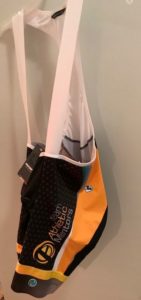
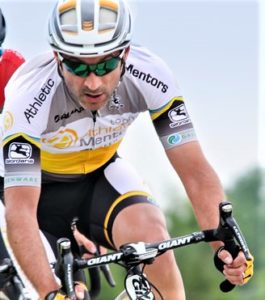 The front and back panels of the jersey wrap the torso with their side-panel-free design which is woven to move moisture away from the body to the exterior of the fabric where it can evaporate quickly. The jersey has three back pockets with pocket lip and a fourth zip pocket for valuables. The construction of these pockets keeps all my gear inside, yet getting items out is a snap and doesn’t require a stop.
The front and back panels of the jersey wrap the torso with their side-panel-free design which is woven to move moisture away from the body to the exterior of the fabric where it can evaporate quickly. The jersey has three back pockets with pocket lip and a fourth zip pocket for valuables. The construction of these pockets keeps all my gear inside, yet getting items out is a snap and doesn’t require a stop.



 Our Hockey Site
Our Hockey Site Team AM
Team AM


